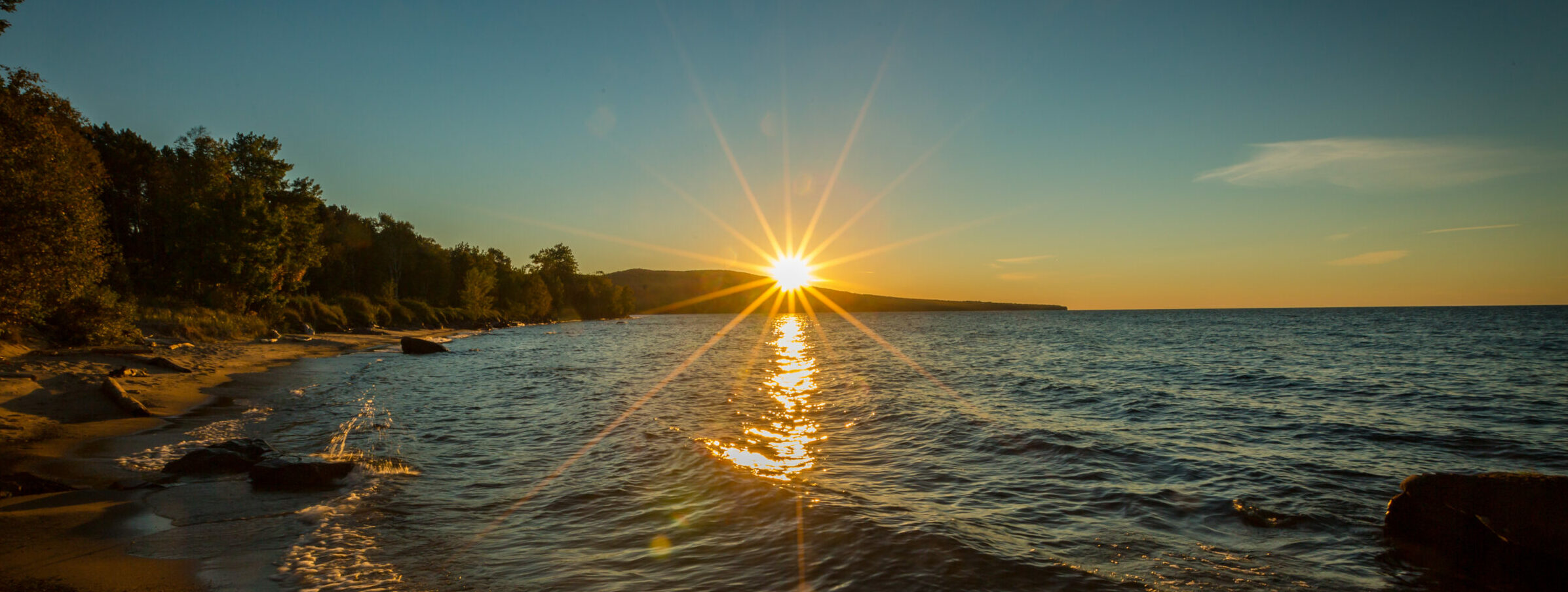The Great Lakes constitute the Earth’s largest fresh surface water system, with one-fifth of the world’s freshwater supply. Not only are they the source of drinking water for more than 40 million people, they’re a vital component of everyday life and the regional economy. However, they face a critical issue: pollution from aging water systems. When functioning properly, water systems ensure that dirty water doesn’t end up in homes or waterways, producing safe drinking water and better regional water quality. However, these water systems are expensive to maintain and are not easy to update in response to an ever-changing world.
Chronic underinvestment in water infrastructure and more frequent, intense storm events have rendered our water systems vulnerable. When these systems fail, contaminated water—which sometimes includes sewage—can end up in our streams, rivers, and lakes, jeopardizing the health and well-being of both people and the environment.
“The true cost of neglecting our water infrastructure is felt in every part of our society — affecting public health, compromising environmental integrity, and undercutting the economy of our region,” said David Rankin, Executive Director at Great Lakes Protection Fund. “It’s time to turn challenges into opportunities, recognizing that upgrading our water systems is an investment in the long-term prosperity and sustainability of our communities.”

Achieving Cost-Effective Water System Infrastructure Improvement
Water infrastructure is expensive. The Great Lakes Commission estimated that the region’s drinking water, wastewater treatment, and stormwater management infrastructure needs exceed $178 billion.
At the same time, the U.S. government’s share of water infrastructure capital has decreased from 60% in 1977 to less than 10% 40 years later, exacerbating the problem of chronic underfunding at the government level. Communities must find other solutions to fund infrastructure improvements–like the private marketplace–or do their best to get by with failing systems. These approaches, however, ultimately result in increased costs, decreased effectiveness, and impacts which often disproportionately affect those who can afford it the least.
At Great Lakes Protection Fund, we’re pioneering new ways for communities to maximize the environmental benefits of water system improvements while minimizing the cost—especially for under-resourced communities.

Inspiring Regional Action Through Collaboration
By organizing and supporting multi-organizational collaborative teams, we’re launching solutions that unlock new ways of addressing these critical issues, and shift how our region designs, deploys, and finances water infrastructure. We’ve invested $4 million into a portfolio of projects that together reshape how smaller, often under-resourced communities remake the water systems that protect their health, environment, and the vitality of their communities.
Unlocking Federal Funding
While funds for infrastructure improvement are available through each state’s clean water revolving loan fund (SRF), some communities simply cannot navigate the complex process of applying for these funds. To remedy this, one project team, led by the Environmental Policy Innovation Center, is working with up to 30 under-resourced communities to finance the necessary technical assistance to secure funding. These communities will secure federal support to pay back the loan and improve stormwater management and wastewater treatment, reduce combined sewer overflows, and expand the deployment of nature-based green infrastructure.
Equipping Communities to Make the Right Investments
Although expanded financing is available, it’s important to build only what’s really needed to get the job done and to be creative in finding efficiencies, new technologies, and better operating models. That’s why we’re supporting a team of local governments, utilities, and consultants led by Moonshot Missions to do just that. They’ll create a publicly available “playbook” that standardizes, simplifies, and reduces the cost of improvements for water utilities. Many Great Lakes communities will have the necessary resources to “right-size” the investments required to improve their utilities’ environmental performance and reduce their operating, maintenance, and debt service expenses.
Expanding Access to Green Infrastructure
Flooding combined with more frequent and intense storms overwhelm many aging water systems. Another project team, led by Delta Institute, and including ten municipalities, community members, and community-based organizations are building an integrated design-build-finance-maintain model for nature-based water solutions. They are pioneering how green infrastructure can be integrated into our built environment, efficiently designed, and deployed and financed using alternative funding sources. Most importantly, they’re building this model to serve communities that have not been able to adopt these strategies because of capacity concerns.
“At Great Lakes Protection Fund, we’re proud to work with the real change-makers—those who are out there building innovations every day,” said Rankin. “Their work is leading to better water at a smaller price tag—in other words, a brighter future for our region.”
For more information on what we do at Great Lakes Protection Fund, visit our website. If you’d like to discuss a project idea, email us at startaconversation@glpf.org.
